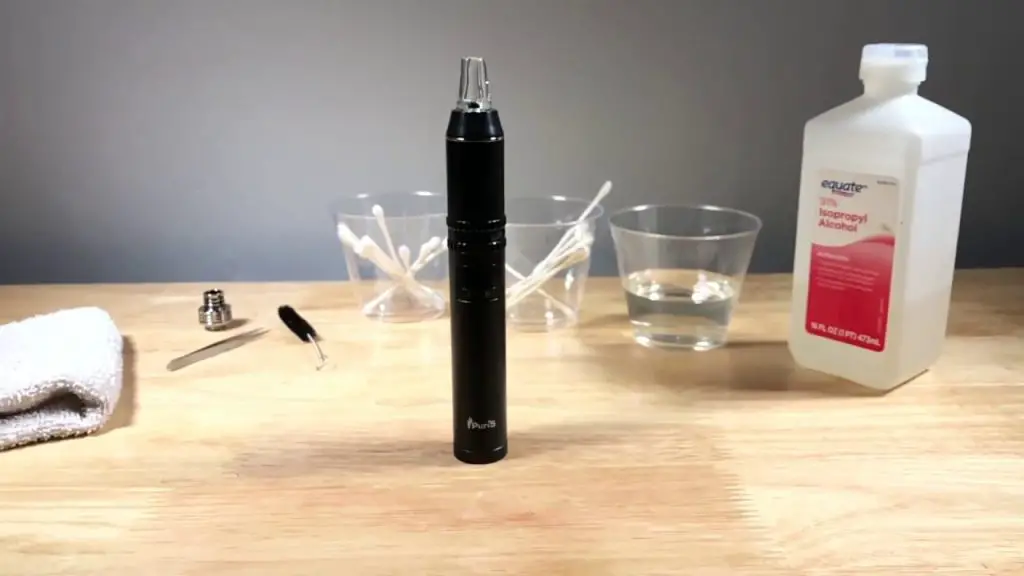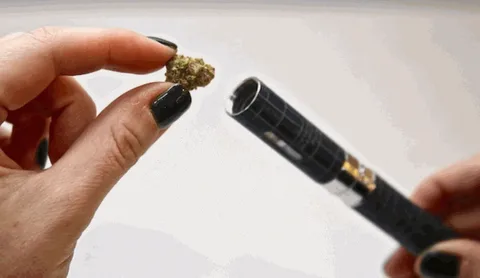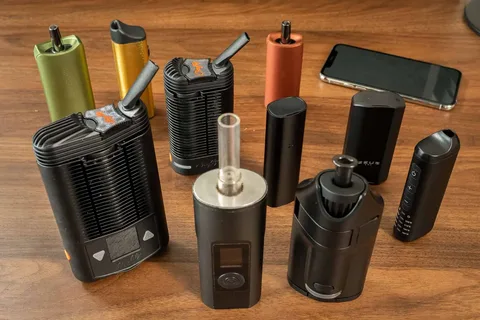In recent years, the rise of vaping has introduced a variety of devices, each with its unique functionalities and mechanisms. Among them, dry herb vaporizers stand out for their ability to transform dried herbs into flavorful vapor without the combustion associated with traditional smoking. Understanding the inner workings of these devices sheds light on their efficiency and popularity within the vaping community.
I. What is a Dry Herb Vaporizer?
Dry herb vaporizers are devices designed to heat dry herbs (such as cannabis, lavender, or peppermint) to a temperature that releases their active compounds in the form of vapor, without combusting the material. These vaporizers offer an alternative to traditional smoking methods by avoiding the harmful byproducts of combustion while preserving the flavors and therapeutic properties of the herbs.
A. Definition and Purpose
The primary function of a dry herb vaporizer is to create vapor by heating plant material without burning it. This process occurs within a controlled chamber, ensuring that the material reaches an optimal temperature for vaporization without reaching the point of combustion.
B. Types of Dry Herb Vaporizers
There are various types of dry herb vaporizers available in the market:
- Portable Vaporizers: Compact and convenient for on-the-go use.
- Desktop Vaporizers: Larger units with advanced features, ideal for home use.
- Conduction Vaporizers: Directly heat the herb by contact with a heated surface.
- Convection Vaporizers: Use hot air to heat the herb indirectly, promoting more even heating.
II. Components of a Dry Herb Vaporizer

A. Heating Element
The heating element is a crucial component responsible for generating the heat required to vaporize the herbs. It can be made of various materials like ceramic, stainless steel, or quartz. Ceramic elements are popular for their even heat distribution, ensuring efficient vaporization without burning the herbs.
B. Chamber or Oven
The chamber or oven is where the dry herbs are placed for vaporization. It’s essential for this component to be well-designed to facilitate even heating and proper airflow, ensuring an efficient vaporization process.
C. Power Source
Most dry herb vaporizers are powered by rechargeable batteries or butane, while desktop versions might rely on direct power sources. Battery-powered vaporizers offer convenience but might require recharging, whereas butane-powered ones provide a continuous heat source.
D. Mouthpiece and Airpath
The mouthpiece allows users to inhale the vapor produced by the device. The airpath, responsible for carrying vapor from the chamber to the mouthpiece, should be designed to preserve the flavor and purity of the vapor.
III. How Does a Dry Herb Vaporizer Work?

A. Vaporization Process
Dry herb vaporizers work by heating the herb material to a specific temperature range, typically between 350°F to 450°F (175°C to 230°C), causing the active compounds, like cannabinoids and terpenes, to evaporate without combustion. This process converts the plant material into a vapor that can be inhaled.
B. Temperature Control
Temperature control is a crucial aspect of vaporization. Different compounds within the herbs vaporize at specific temperatures, affecting the flavor and effects. Some devices offer precise temperature control, allowing users to adjust the heat settings for a customized vaping experience.
C. Conduction vs. Convection Heating
Conduction heating involves direct contact between the herb and the heating element, transferring heat through direct touch. Convection heating, on the other hand, uses hot air to circulate around the herb, evenly heating it without direct contact. Convection heating often results in more efficient vaporization and preserves the herb’s flavor profile.
D. Impact on Flavor and Efficiency
The vaporization process in dry herb vaporizers aims to extract the desired compounds while minimizing combustion. This method helps retain the natural flavors and aroma of the herbs, offering a cleaner and smoother experience compared to smoking. Additionally, efficient vaporization ensures that more of the active compounds are utilized, maximizing the herb’s potential.
IV. Understanding the Mechanics

A. Heat Transfer and Vapor Production
The heat transfer mechanism within a dry herb vaporizer directly impacts vapor production and quality. Efficient heat distribution ensures that the herb is heated evenly, leading to consistent vaporization and optimal extraction of compounds.
B. Maintenance and Cleaning Tips
Proper maintenance is vital for the longevity and performance of a dry herb vaporizer. Regular cleaning of the chamber, mouthpiece, and screens helps prevent residue buildup, ensuring a clean and flavorful vaping experience.
C. Evolution of Dry Herb Vaporizers
Dry herb vaporizers have evolved significantly over time, with advancements in technology leading to more sophisticated and user-friendly devices. Innovations in heating methods, temperature control, and design have contributed to improved efficiency and user satisfaction.
V. Advantages and Disadvantages of Dry Herb Vaporizers

A. Health Benefits
Dry herb vaporizers offer several health advantages over traditional smoking methods. By avoiding combustion, these devices produce vapor that contains fewer harmful substances found in smoke, reducing respiratory irritation and potentially minimizing health risks associated with smoking.
B. Portability and Convenience
Portable dry herb vaporizers are compact, discreet, and easy to carry, catering to users who prefer on-the-go vaping. Their rechargeable battery-powered design allows for flexibility and convenience, enabling vaping in various settings without the need for a constant power source.
C. Limitations and Considerations
Despite their advantages, dry herb vaporizers also have limitations. Some models might have a learning curve when it comes to temperature control and maintenance. Additionally, the initial cost of purchasing a quality device might be higher compared to traditional smoking methods.
Conclusion
Dry herb vaporizers have revolutionized the way individuals consume herbs, offering a cleaner and more efficient alternative to traditional smoking. By harnessing the principles of controlled heating and vaporization, these devices provide a more enjoyable and potentially healthier experience for users.
In exploring the mechanisms behind dry herb vaporizers, it becomes evident that their design, heating methods, and temperature control significantly impact the vaping experience. From their health benefits to their portability and evolving technology, these devices continue to shape the landscape of modern vaping culture.
Understanding the nuances of how dry herb vaporizers work empowers users to make informed choices, optimizing their vaping experience while embracing the advancements in this rapidly evolving industry.

